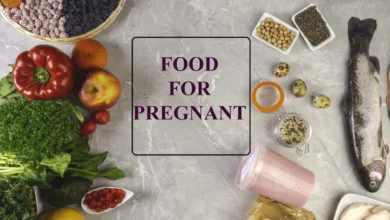Navigating the Road to Pregnancy After a Stillbirth
Understanding When It’s Safe to Try Again After a Stillbirth
New Research Provides Clarity on the Timing
While the question of how long to wait has been largely unanswered in the past, recent research is shedding light on this important topic. One of the most notable studies conducted on the matter followed thousands of women who experienced stillbirths and then attempted subsequent pregnancies. The study’s findings provide much-needed evidence about the risks and outcomes associated with trying to conceive again after such a devastating loss.
Understanding Stillbirth and Miscarriage
To better understand the implications of trying for another pregnancy after a stillbirth, it’s helpful to define what a stillbirth is. A stillbirth occurs when a baby is born dead after 24 weeks of gestation, which is different from a miscarriage (or early fetal death), which happens before this point. While both experiences are traumatic and involve the death of a baby, the emotional and physical recovery processes differ, and research has shown that the timing of subsequent pregnancies may have different implications depending on the type of loss.
World Health Organization Recommendations
The World Health Organization (WHO) has made some recommendations for the timing of pregnancies following a stillbirth or other pregnancy loss. The WHO recommends that women wait at least two years after the birth of a stillborn child to try again to reduce the risk of complications in future pregnancies. For women who have experienced a miscarriage or induced abortion, the recommended waiting period is at least six months.
However, when it comes to stillbirth, there is no definitive recommendation from the WHO on the optimal wait time before conceiving again. Some experts believe that a longer wait time is necessary to allow both physical and emotional healing, but recent studies have questioned whether this is truly necessary.
How Quickly Do Women Become Pregnant After a Stillbirth?
Interestingly, research has found that many women attempt to get pregnant again very quickly after a stillbirth. In one extensive study that tracked 14,452 women for over 37 years, more than 60% of the women studied became pregnant again within 12 months of their stillbirth. This statistic highlights the deeply personal and often urgent desire for many women to try again, despite the pain of loss.
Does Getting Pregnant Soon After a Stillbirth Increase Risks?
One of the most significant findings from the study was that conceiving within 12 months of a stillbirth did not increase the risk of adverse pregnancy outcomes, such as another stillbirth, preterm birth, or a low-birth-weight baby. Researchers found that women who conceived within a year of their stillbirth had outcomes similar to those who waited two years or more before trying again.
The study, published in The Lancet, followed women in Finland, Norway, and Australia who had experienced stillbirths between 1980 and 2016. Of the 9,109 pregnancies that were studied, 63% were conceived within 12 months of a stillbirth. Among these pregnancies, only 2% resulted in another stillbirth, 18% were preterm deliveries, and 9% involved babies who were smaller than expected for their gestational age. However, these numbers were not significantly higher than those in pregnancies where the woman waited two years or more to conceive again.
This finding provides reassurance for families who are ready to try again that doing so within a year of a stillbirth does not inherently increase the risk of complications in subsequent pregnancies.
The Study That Is Changing the Conversation
The international study conducted by the Norwegian Institute of Public Health, Curtin University in Australia, and Finland’s National Institute for Health and Welfare is one of the most comprehensive investigations into pregnancy outcomes following stillbirth. This study is particularly valuable because it utilized national health registers from three different countries, ensuring a large and diverse sample. By including data from a wide range of women who experienced stillbirths, researchers were able to draw conclusions that are more applicable to the general population.
As the lead author of the study pointed out, these findings offer crucial information to women and families who have experienced a stillbirth. It also provides reassurance to women who wish to try conceiving again relatively soon after their loss. The key takeaway from the research is that, contrary to earlier concerns, getting pregnant soon after a stillbirth is not linked to a higher risk of pregnancy complications.
The Emotional and Physical Aspects of Recovery
While the study provides comforting evidence that it is generally safe to try again soon after a stillbirth, it is crucial to recognize that every woman’s journey to pregnancy after such a loss is different. The physical healing process, particularly if a woman experienced a traumatic delivery or required a cesarean section, may take time. It is important to allow the body to recover before embarking on another pregnancy. Additionally, the emotional healing process from the loss of a stillborn child is deeply personal. Many women may not feel ready to try again right away and may need time to grieve, seek counseling, or engage in other forms of emotional healing.
Healthcare providers can help guide women through this process, offering support and resources to ensure they are both physically and emotionally prepared to try for another pregnancy. It’s essential that women feel empowered to make decisions that are right for them, whether that means trying again quickly or waiting for a longer period.
You might also like: Ginger During Pregnancy
What Causes Stillbirth?
Understanding what causes stillbirth can also help women and their healthcare providers assess the risks involved in future pregnancies. While many cases of stillbirth occur for unknown reasons, some common causes have been identified.

Pregnancy Complications and Labor Complications
Some circumstances can lead to complications or the death of the baby before delivery. These include:
- Preterm labor is likely to be caused by complications during pregnancy
- Changes in the placenta
- placental abruption
- Pregnancy lasting longer than 42 weeks
- Carrying multiples
- Accident or injury during pregnancy
Common causes of stillbirth include pregnancy and labor complications, placental abruptions, and other trusted sources.
Placenta Problems
Any interference with the placenta puts the baby’s health at risk. Placental problems can include poor blood flow and inflammation. Placental abruption is another condition that occurs when the placenta separates from the uterine walls before birth.
The Baby’s Genetic, Structural, and Developmental Conditions
About 14% of stillbirths are caused by prenatal conditions. These include:
- fetal growth restriction
- Genetic conditions
- Rh Incompatibility
- Structures are changing
Genetic conditions exist at conception. Environmental factors may also be responsible for prenatal development changes, but their cause is not always known.
If the baby is suffering from serious developmental problems or structural changes, it may not be possible for them to survive.
Infection
Stillbirth can be caused by an infection of the mother, placenta, or baby. More often, stillbirths are caused by infection before the 24th week.
The following infections can occur:
- cytomegalovirus
- fifth Disease
- Genital Herpes
- listeriosis
- syphilis
- Toxoplasmosis
Problems with the Umbilical Cord
The baby will not get enough oxygen if the umbilical cord is twisted or squeezed. Umbilical cord issues are more likely to cause stillbirth if they occur during pregnancy or labor.
Maternal Health
Stillbirth can be caused by the mother’s poor health. Stillbirth can be caused by health conditions that affect the mother during pregnancy.
- preeclampsia
- diabetes
- lupus
- obesity
- Thrombophilia
- thyroid disorders
Unexplained Stillbirth
Nearly 60 percent of all stillbirths (source) are unexplained, meaning that doctors do not know the reason for their occurrence. Although it can be difficult to accept, you shouldn’t blame yourself.
What are the Risk Factors of Stillbirth?
Anyone can have a stillbirth, but some risk factors may be present.
- Has a medical condition such as diabetes or high blood pressure
- Obesity is a serious problem.
- Black
- I am a teenager or over 35
- Previous stillbirth
- Experienced trauma or high levels of stress during the year before delivery
- Lack of access to prenatal care
What are the Symptoms and Signs?
Early on, you may not have any symptoms. You may experience pain, cramping, or bleeding in the vagina. Your baby’s stopping moving is another sign.
You can begin a daily kicking count when you reach your 26th to 28th week. You’ll need to gauge how much your baby moves.
It’s important to know how long it will take your baby to complete 10 movements. Here’s how:
- You should do the kick count every day at the same time.
- Count the movements (such as kicks, flutters, or swishes).
- Hiccups don’t count.
- When you reach 10, stop counting and take note of the time.
- Compare the time and intensity of each session with previous sessions.
If you notice that your baby is not moving as much or it is taking longer to get to 10 movements, go to the hospital right away. Hospitals are always available and provide immediate treatment if necessary. They are therefore the best place to have your baby checked. You should not delay getting your baby checked. Instead, you should wait until the next day. You don’t need to use a Doppler, a handheld monitor, or cellular apps to check the heartbeat of your baby. Even if your baby’s heartbeat is detected, it does not mean that your baby is healthy. Using these devices or methods can delay the treatment you and your child may need.
You should not waste time trying to make your baby move. This can be done by drinking cold or sugary water. Get immediate care to ensure that you and your child are checked as soon as possible by healthcare professionals.
You might also like: Best Thing About Being Pregnant
How Can It Be Diagnosed?
A non-stress test can be performed by your doctor to detect a fetal pulse. Ultrasound imaging confirms that your baby’s heart has stopped and is not moving.

Determine the Cause
Your doctor may perform an amniocentesis while your baby is still inside your womb to check for genetic and infectious conditions. Your doctor will examine your baby after delivery. They will also examine the umbilical cord and placenta. If necessary, an autopsy can be performed.
You will be informed of the next steps by your doctor or healthcare professional.
What To Do After a Stillbirth?
You should not minimize the loss or encourage guilt feelings in the victim. They are grieving for the baby that they lost. It’s not helpful to talk about future pregnancies unless the woman brings it up.
Compassion and support are what they need now. As you would with anyone who has suffered a loss, offer your sincere condolences. Do not try to change topics. Let them express themselves as often as necessary and in the way they prefer.
Encourage them to get enough rest, eat healthy, and attend their doctor’s appointments. Offer to do household chores in the first couple of weeks. Be there for them.




